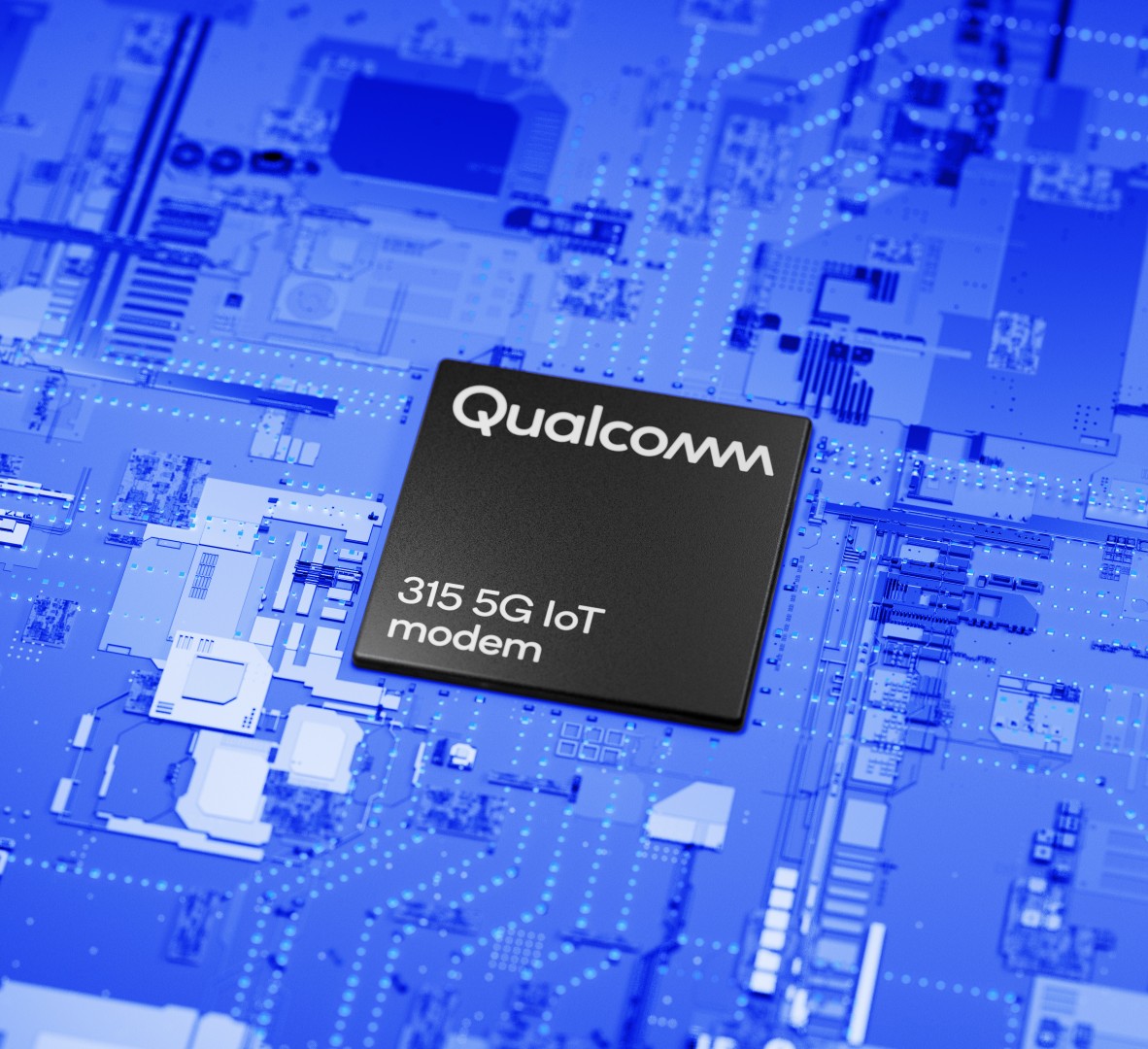Even as the global smartphone market continues to recover from Covid-19, the global chip shortage has been tightening its grip. But despite this, the demand for 5G smartphones is on the rise.
To address this demand, Qualcomm has been expanding its portfolio of Snapdragon SoCs, from the premium 8-series to all the way down to 4-series. At its virtual 5G Summit 2021, Qualcomm announced the latest Snapdragon 778G 5G mobile platform to accelerate 5G adoption in the mainstream mid-tier to high-tier segment.
Snapdragon 778G Launch Builds on 765’s Stellar Success
Qualcomm continues to lead the fast-growing 5G smartphone SoC market. The Snapdragon 765G, the first 7-series 5G SoC launched last year, was the best-selling integrated 5G SoC in Q4 2020, powering one in five Android smartphones globally. It is also the first 7-series platform to bring flagship features to mid-tier and high-tier smartphones.
The Snapdragon 765G chipset powers over 40 smartphone models from more than 20 OEMs. Some of the most popular smartphones include the OnePlus Nord (review), vivo X50 Pro (review), Nokia 8.3 (review) and the LG Wing (review).
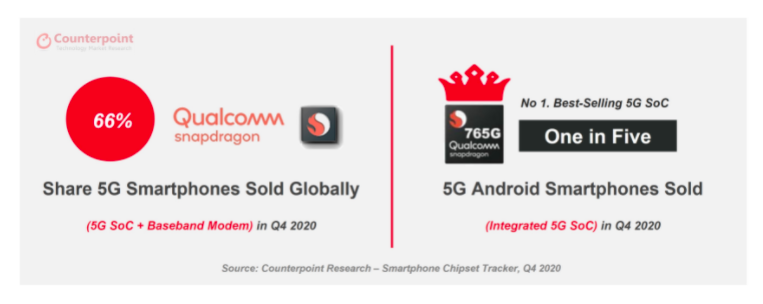
Building on the platform’s success, Qualcomm continues to push advanced AI and gaming features, along with premium camera experiences, to the 7-series with the new Snapdragon 778G.
Qualcomm would look to widen the gap with competition, especially given MediaTek’s strong recent growth thanks to Huawei, broader portfolio of mid-tier to high-tier 5G Dimensity SoCs and less foundry-side and supply issues compared to Qualcomm. We expect the Snapdragon 778G to be an even bigger success than its predecessor.
Qualcomm Snapdragon 778G 5G SoC: Key Specifications and Features
Qualcomm is positioning this chipset to offer advanced multimedia, camera, gaming and AI experiences to mainstream users, with decent gains over the previous generation.
Powerful CPU: The Snapdragon 778G 5G mobile platform is built on TSMC’s 6nm node. The chipset features a 64-bit octa-core Kryo 670 CPU with four Cortex-A78 performance cores clocked at 2.4GHz, and four Cortex-A55-based efficiency cores clocked at 1.8GHz.
Better Visuals: On the graphics side, the SoC comes with the Adreno 642L GPU. Qualcomm says the “L” here sees a minor performance difference compared to the Adreno 642 GPU on the Snapdragon 780G SoC. However, it brings performance gains over the Adreno 620 on the Snapdragon 765G 5G platform. The 778G 5G chipset also brings support for Vulkan 1.1, OpenGL® ES 3.2 and OpenCL 2.0 FP APIs, along with HDR gaming (10-bit color depth, Rec. 2020 color gamut), HDR10+, HDR10, and more.
Faster Display Refresh Rate: Smartphones with a refresh rate higher than 90Hz are becoming more popular as they offer smooth scrolling, and a better video and gaming experience. The new chipset supports FHD+ displays with a maximum refresh rate of 144Hz, an external display up to 4K resolution, and a 60Hz refresh rate.
Advanced Connectivity: The Snapdragon X53 5G Modem-RF System enables Sub-6GHz and mmWave 5G connectivity with peak download speeds up to 7Gbps. There is support for Dynamic Spectrum Sharing as well. Moreover, the FastConnect 6700 system brings Wi-Fi 6E connectivity with peak download speeds up to 2.9Gbps. Lastly, the chipset also supports Bluetooth 5.2, aptX codec, and Snapdragon Sound with 24-bit 96-kHz music-streaming capabilities.
Triple ISP for Enhanced Photo and Videography Experiences
With lockdowns still in place in several countries, a lot of smartphone users are trying their hands at content creation. As a result, demand for short video apps has seen a rise. The Spectra 570L ISP (Image Signal Processor) unlocks new possibilities, allowing users to capture three photos or video streams simultaneously. This means users can now record from wide, ultra-wide and zoom lenses at the same time, and effortlessly switch between them.
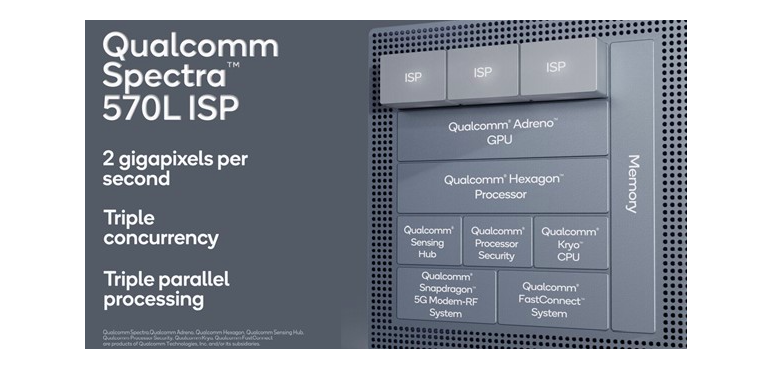
There is also support for Multi-Frame Noise Reduction (MFNR) and Zero Shutter Lag (ZSL). The ISP supports up to 22MP triple cameras, up to 36+22MP dual cameras, and up to 64MP single camera at 30fps video-recording with Zero Shutter Lag for blur-free recording. Lastly, there is also AI-based auto-focus and auto-exposure to help you click sharper and brighter photos, even in low light.
Advanced AI for Richer Experiences
The Hexagon 770 processor with 6th gen Qualcomm AI engine enables improved imaging, video and audio capabilities. It can deliver 12TOPS (trillion operations per second), a big improvement over the Hexagon 696 delivering 5.5TOPS on the Snapdragon 765G 5G SoC.
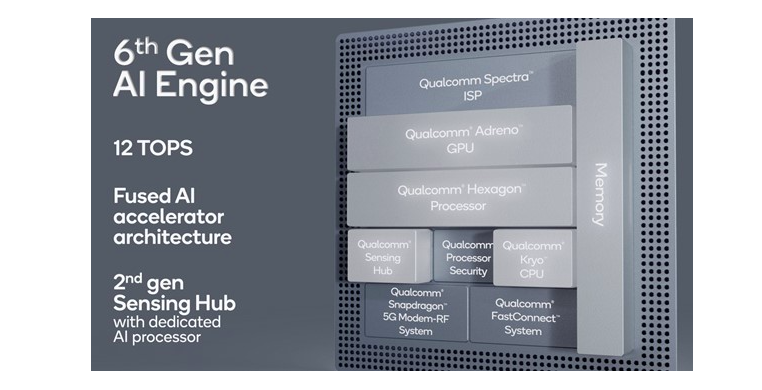
In these times of lockdowns, audio and video calling has become an important tool to keep in touch, learn and collaborate on work. But unlike the office environment, there are quite a few distractions at home, like dogs barking, kids running around and, if you stay closer to the road, vehicles passing by.
The AI noise suppression can reduce background noise, thus enabling the callers to hear your voice clearly. The triple ISP with AI can also come in handy when on video calls. It can detect the subject and automatically blur the background so that the caller does not get distracted by the objects around you. The ISP also works on rear cameras while recording videos. The AI-based EIS (electronic image stabilization) greatly helps to reduce the jerks and offers smooth footage.
Snapdragon Elite Gaming: Be on Top of Your Game
Besides audio and video calling, and binge watching, gaming has also increased during the pandemic. With things getting competitive in Battle Royale games like PUBG Mobile, Call of Duty Mobile and Fortnite, the Snapdragon Elite Gaming features enable better experiences.
Gamers can enjoy up to 40% faster graphics rendering and 40% faster CPU performance for a smooth experience, even during long gaming hours. Key features include Game Quick Touch which optimizes the touch response by increasing the speed of touch to display by 20% while decreasing the latency. This comes quite handy when playing Battle Royale games, where even a millisecond difference can make you win or lose the match.
Variable Rate Shading is another key feature that increases the rendering performance and quality by varying the shade rate across different regions in a frame. Apart from allowing games to run faster, it offers richer graphics at higher resolution while consuming lower power. Other features include a jank reducer and game network latency manager to optimize network settings and make online gaming more fluid.
Snapdragon 778G 5G vs 765G 5G and Competition
Qualcomm’s high-tier Snapdragon 778G chipset competes with MediaTek’s flagship Dimensity 1200 5G. The support for mmWave 5G, Wi-Fi 6E and Hexagon 770 DSP with 12TOPS for AI and ML related tasks differentiates the Qualcomm chipset from MediaTek’s offering. Below is a comparison table, which also highlights the key upgrades the new chipset brings over the Snapdragon 765G.
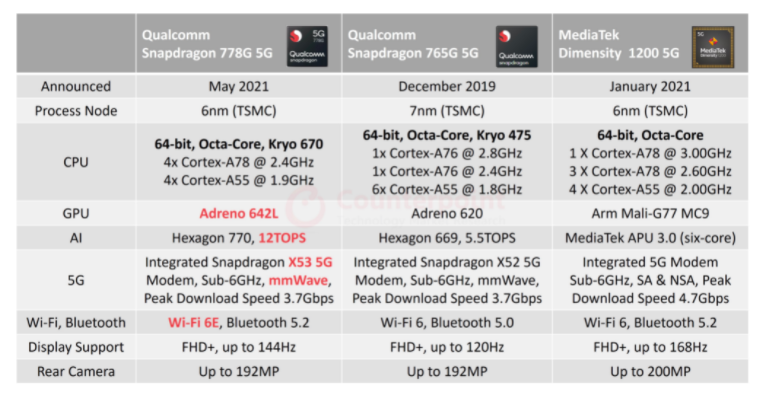
Snapdragon 778G 5G-powered Smartphones Coming in Q2 2021
Chinese smartphone maker HONOR is set to launch the HONOR 50 series, powered by the new Snapdragon 778G 5G mobile platform. Other smartphone vendors such as iQOO, Motorola, Xiaomi, OPPO and realme are also planning to release smartphones powered by the new chipset.


